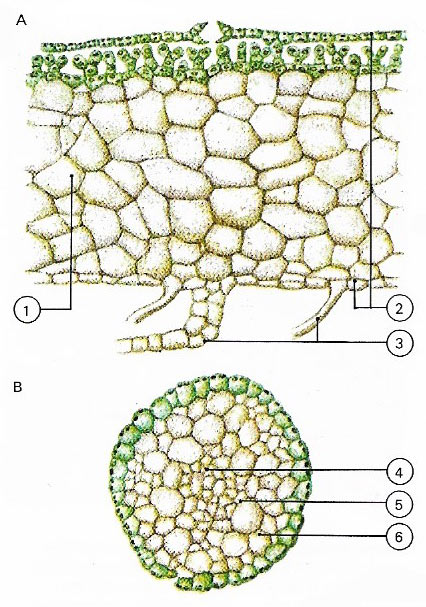liverwort

The thallus of the liverwort Marchantia in cross-section )A) shows unspecialized ells (1) bounded by surface layers (2). Scales and rhizoids (3) are found on the lower surface. The moss "stem" (B) shows a central cylinder of cells (4) that conduct water up the stem. The surrounding cells (5) conduct food. Unspecialized cells (6) lie between these and the ouer epidermal layer.
Liverworts are members of a group of primitive prostrate plants growing in moist habitats and occasionally in water. They form the class Hepaticae of the division Bryophyta (see bryophyte), which also includes the mosses and hornwort. The leaf-like lobes of a liverwort are known as a thallus, which a;so resembles a lobed liver – hence their common name. The flat thallus is attached to the ground by root-like rhizoids. It is estimated there are 6,000–8,000 species of liverworts and they provide important microhabitats for insects and microorganisms.


